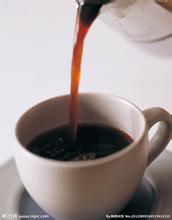Lively citrus citric acid sun Yega Shifeiwaka Coffee Flavor description Variety characteristics
The traditional way of tanning in Ethiopia is rough and smelly, which has been criticized by people. In 1959, the South American water washing method was introduced into the Yega Xuefei producing area. Most producing areas generally adopt the water washing treatment, that is, after the coffee fruit is peeled, the pectin layer is removed after fermentation and washing, and then dried.
Since 2006, some coffee processing plants in some producing areas have adopted the exquisite elevated shed sun drying method, which invests in high-intensity human labor, which isolates the coffee fruit from contact with the ground and prevents the miscellaneous smell of soil in the process of sunlight. create an unusually clean fruit flavor. After more than two weeks of sun exposure, dark brown coffee fruits are professionally stored, waiting for the whole flavor to ripen. Before the sale, the sun-dried cherry flesh and sheepskin are removed, and then the unripe beans and over-fermented beans are removed. Strict control has greatly improved the quality of sun-dried beans. Cool and foggy in the mountain villages of the Yegashifi producing area, the summer breeze is slow, cool but not hot, rain but not damp, and winter does not cause cold damage, which is the best environment for planting Arabica. There are no large coffee plantations. Coffee farmers mix coffee with other crops, usually under banana trees, to form a unique landscape.
Sun-treated Erika G1 has more lively citrus citric acid, aromas of apricot blossoms, exploding nuts of walnuts, and subtle aromas of cinnamon, cloves, rosemary and other spices. taste with a very good honey brown sugar sweet, very soft and attractive, as if the whole body soaked in the sea in early autumn, slapped by the cool sea Full of impact and stretching tenderness. What is even better is the tail rhyme, which will be filled with a sweet and sour sense of fruit and tea, like colorful bubbles. In such a reverie, Maoye seems to have returned to the era of first love, the era of carefree efforts to love.
Yega Xuefei is a by-product area of Sidamo province in Sidamo, Ethiopia. It is located in the northwest of Sidamo. It is one of the highest coffee-producing areas in Ethiopia. However, the mode of production and flavor here are so outstanding that Ethiopian coffee farmers compete to take pride in the flavor of their coffee, so they are independent from Sidamo and have their own style. It has also become the most famous producing area in Africa, Ethiopia Ethiopia Yirgacheffe Konga, which is extremely charming and unique in terms of dry and wet fragrance. Light to moderate baking degree, HARIO V60 hand flushing, water temperature about 85 degrees, medium fineness grinding, 215g water, 10g powder. The acidity of the product is very high, like a very sour fruit juice, basically no bitterness, alcohol thickness and consistency is poor. After using Ailo pressure, 230g water, 15g powder, about 90 degrees water temperature, it shows that most of the bitter Yega Xuefei is washed, but there are also a few off-product beans intended to be insolated to enhance the charming fruit aroma and mellow thickness. Coffee trees are mostly planted in farmers' own backyard or mixed with other crops in the field, the yield per household is not much, it is a typical rural coffee. These mountain villages are foggy, like spring all year round, with a gentle breeze in summer, cool but not hot, rain but not damp, and no cold damage in winter, giving birth to a unique flavor of citrus and flowers. The so-called "Yega Chuefei" refers to the strong aromas of jasmine, lemon, peach, almond and tea. Coffee entrance, flowers in full bloom! Just like a flower touches the comfort of taste buds and olfactory cells in the nasal cavity. In addition to the fragrance of the flowers, the delicate and mellow thickness (body) is like silk massage in the mouth, which makes it feel wonderful.

Important Notice :
前街咖啡 FrontStreet Coffee has moved to new addredd:
FrontStreet Coffee Address: 315,Donghua East Road,GuangZhou
Tel:020 38364473
- Prev

El Salvador Himalayan Coffee Variety Flavor description introduction of Fine Coffee
In 742, coffee was introduced to El Salvador from the Caribbean (1740). In the mid-19th century, El Salvador's original export pillar Indigo (one of the dyes) received a gradual decline in the development of synthetic dyes in Europe, and coffee gradually became the main export product under the guidance of the government. In 1856, the first 693 bags of coffee beans were shipped to Europe. Until the second World University.
- Next

Description of Flavor of Yunnan small Grain Coffee Iron pickup Coffee introduction to the taste of fine coffee beans in producing areas
Yunnan can be said to be the only province that still grows Arabica on a large scale, mainly in Dehong Lincang, Baoshan, western Yunnan and Pu'er Banna in southern Yunnan. Robusta was the main coffee introduced by missionaries in the 19th century, and then it was no longer planted on a large scale. In the 1950s, experts assisted by the Soviet Union put two mainstream Arabica varieties in the world: typica and Bo.
Related
- Detailed explanation of Jadeite planting Land in Panamanian Jadeite Manor introduction to the grading system of Jadeite competitive bidding, Red bid, Green bid and Rose Summer
- Story of Coffee planting in Brenka region of Costa Rica Stonehenge Manor anaerobic heavy honey treatment of flavor mouth
- What's on the barrel of Blue Mountain Coffee beans?
- Can American coffee also pull flowers? How to use hot American style to pull out a good-looking pattern?
- Can you make a cold extract with coffee beans? What is the right proportion for cold-extracted coffee formula?
- Indonesian PWN Gold Mandrine Coffee Origin Features Flavor How to Chong? Mandolin coffee is American.
- A brief introduction to the flavor characteristics of Brazilian yellow bourbon coffee beans
- What is the effect of different water quality on the flavor of cold-extracted coffee? What kind of water is best for brewing coffee?
- Why do you think of Rose Summer whenever you mention Panamanian coffee?
- Introduction to the characteristics of authentic blue mountain coffee bean producing areas? What is the CIB Coffee Authority in Jamaica?

